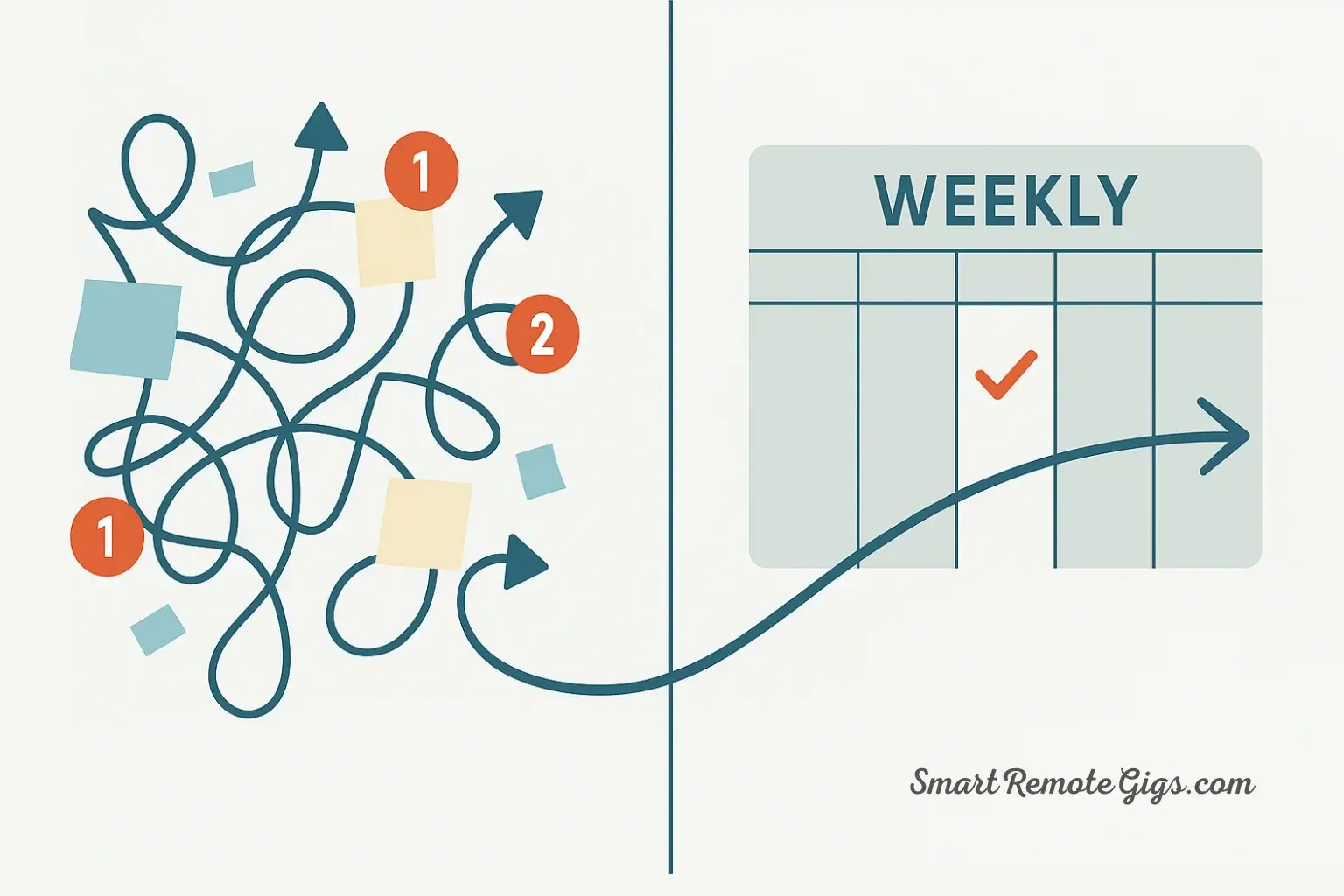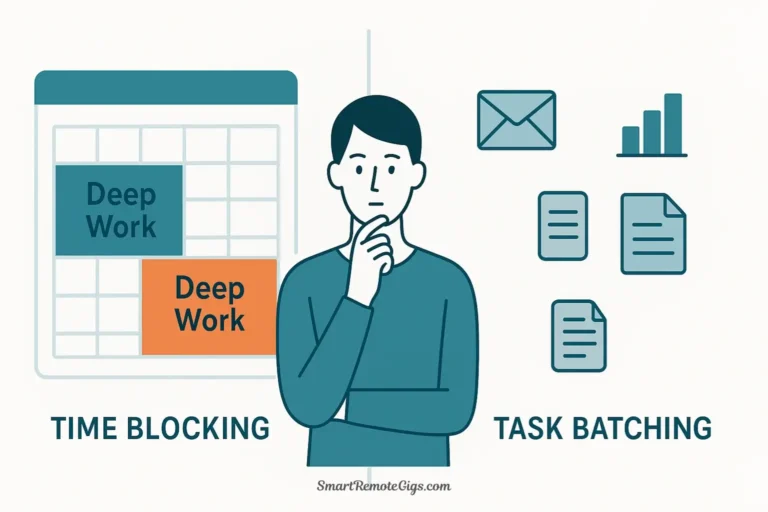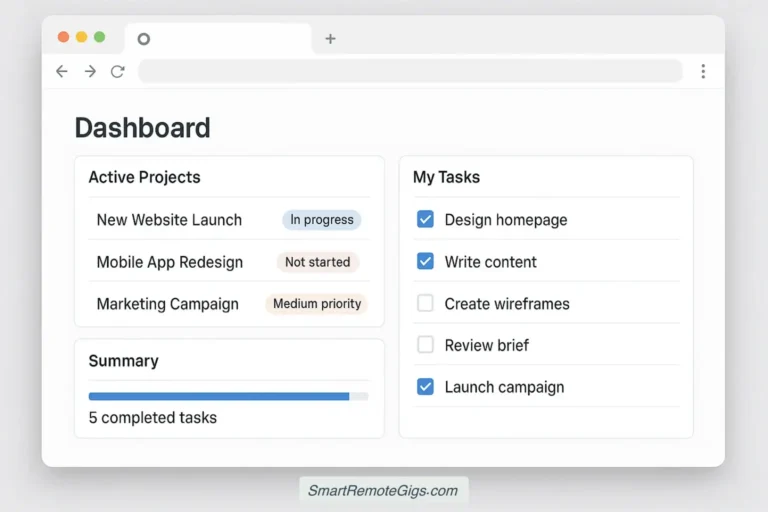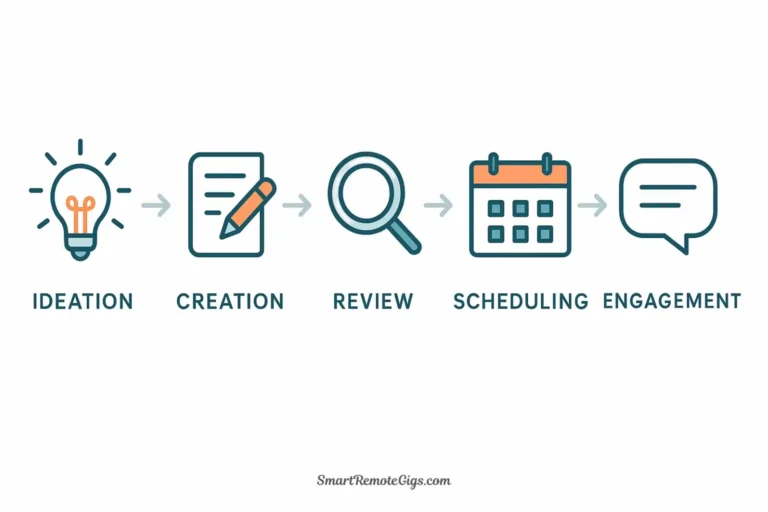Do you ever reach Sunday night feeling like you’ve been busy all week but accomplished nothing meaningful? You’re drowning in tasks, reacting to everyone else’s urgencies, and wondering where your time actually went. If this sounds familiar, you’re not alone—and more importantly, you’re about to discover how to plan your week in a way that transforms chaos into clarity.
The difference between being busy and being productive isn’t about working harder—it’s about working with intention. This comprehensive weekly planning system will move you from a reactive state to a proactive, in-control approach that actually delivers results.
Key Takeaways: The 5-Step Pro Planning System
Transform your week with these 5 essential steps:
- The Sunday Reset – 30-minute clarity session to review and prepare
- Define 3 Weekly Wins – Outcome-based goals across professional, personal, and wellness areas
- Time-Block Blueprint – Schedule priorities directly into your calendar with theme days
- The 20% Flex Rule – Build buffers for interruptions and opportunities
- Daily 5-Minute Huddle – Quick morning check-ins to stay aligned
This system helps you plan your week like a pro by focusing on outcomes over tasks and building resilience into your schedule.
The Core Problem: Why Most Weekly Plans Fail
Before diving into the solution, let’s address why traditional weekly planning approaches often leave you frustrated. Most people make three critical mistakes:
Over-scheduling every minute without accounting for the inevitable interruptions that derail even the best-laid plans. Research from the Harvard Business Review shows that knowledge workers are interrupted every 11 minutes on average, yet most weekly schedules assume uninterrupted focus blocks.
Focusing on task lists instead of outcomes. A 47-item to-do list might make you feel organized, but it doesn’t distinguish between busy work and meaningful progress toward your goals.
Planning in isolation without considering energy levels, meeting patterns, or the natural rhythm of your week. This is why time blocking techniques have become essential for productivity planning.
The result? You end up reactive instead of proactive, constantly putting out fires instead of making meaningful progress. But here’s the good news: there’s a better way to organize your week.
The Definitive 5-Step Pro Planning System
Step 1: The Sunday Reset – Your 30-Minute Clarity Session
Your sunday planning routine is the foundation of a productive week. This isn’t about creating another to-do list—it’s about gaining clarity and setting intention. Research from the University of Scranton shows that people who regularly review their goals are 10 times more likely to achieve them.
The Complete 30-Minute Sunday Reset Process:
Phase 1: Reflection & Review (8 minutes)
- Celebrate last week’s wins (3 minutes)
- Write down 3 specific accomplishments, no matter how small
- Note what strategies or conditions led to these successes
- Analyze challenges and obstacles (5 minutes)
- Identify what didn’t go according to plan
- Extract one lesson from each challenge to apply moving forward
Phase 2: Digital & Physical Cleanup (12 minutes)
- Clear your digital inboxes (7 minutes)
- Process emails with the 2-minute rule: if it takes less than 2 minutes, do it now
- Archive or delete processed items
- Check and clear notification badges
- Organize your physical workspace (5 minutes)
- Clear your desk and prepare materials for Monday’s first priority
- Set out clothes for Monday morning to reduce decision fatigue
Phase 3: Forward Planning & Intention Setting (10 minutes)
- Review your upcoming calendar (5 minutes)
- Identify high-stakes meetings or deadlines
- Check for scheduling conflicts or over-commitments
- Set your weekly theme and intentions (5 minutes)
- Choose one word that captures how you want to approach the week
- Connect your weekly activities to your longer-term goals
During your weekly review, ask yourself: “If I could only accomplish three things this week that would make me feel proud and accomplished, what would they be?” This question naturally leads us to Step 2.
To help you answer this question with strategic precision, many professionals use a proven framework to distinguish between urgent distractions and truly important goals. A powerful companion to this reset process is the Eisenhower Matrix: The Ultimate Guide (+ Templates), which will ensure the three things you choose are the right ones.
Step 2: Define Your 3 “Weekly Wins” (Not Just Tasks)
This is where traditional weekly planning systems completely miss the mark. Instead of drowning in an endless task list, focus on outcomes—specific, meaningful results that move your life forward. Behavioral economist Dan Ariely’s research reveals that people who focus on outcomes rather than activities experience higher motivation and better follow-through.
The Holistic Wins Framework:
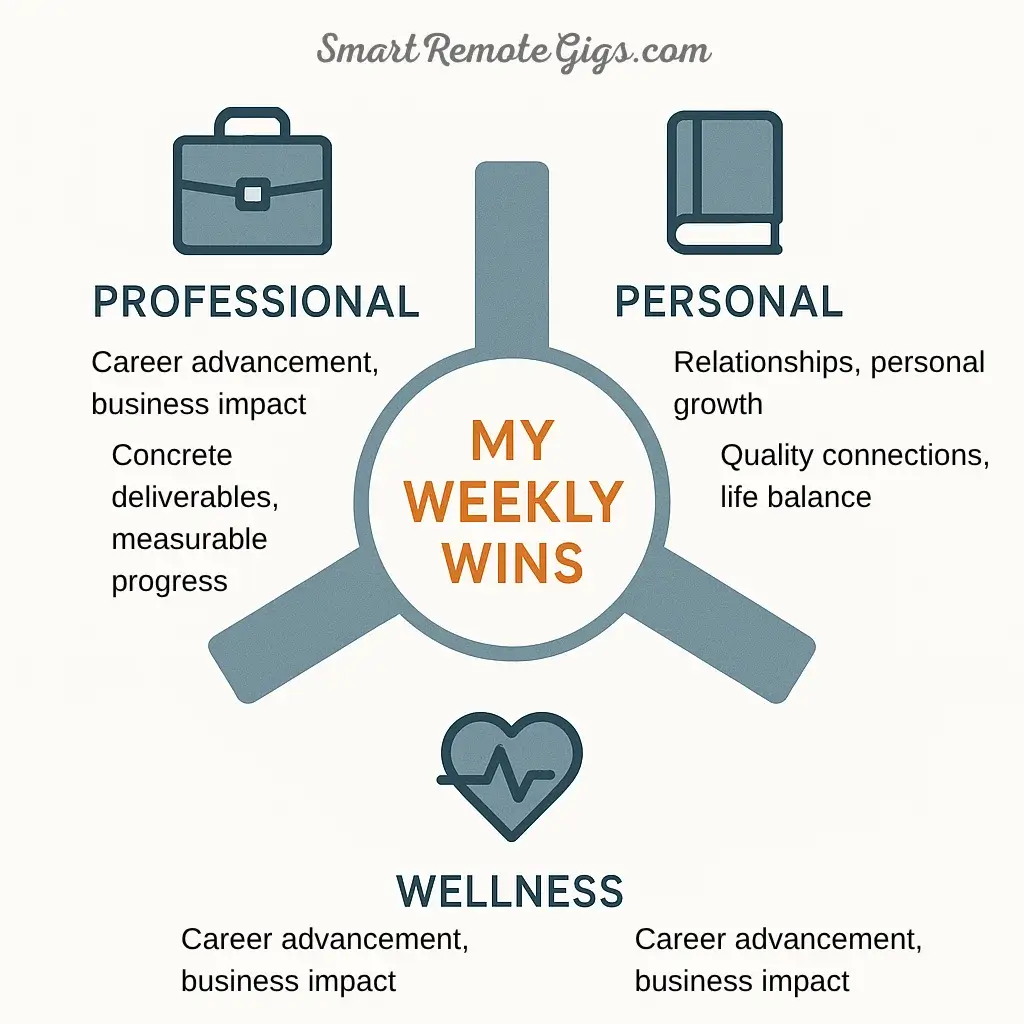
Crafting Your Professional Win:
Your professional win should directly connect to your career trajectory. Instead of “finish project,” try “complete client presentation that demonstrates our ROI increase and positions us for contract renewal.”
Examples of Strong Professional Wins:
- “Launch the marketing campaign pilot that could increase lead generation by 25%”
- “Have the performance conversation with my manager that clarifies my promotion timeline”
- “Complete the skills assessment that identifies my next learning priority”
Designing Your Personal Win:
Personal wins nurture relationships, personal growth, or life satisfaction in ways that energize rather than drain you.
Examples of Meaningful Personal Wins:
- “Have three device-free meals with family where we actually connect”
- “Complete the first chapter of the photography course”
- “Organize the home office space so it supports my productivity”
Establishing Your Wellness Win:
Your wellness win isn’t about perfection—it’s about consistency. Stanford’s Behavior Design Lab shows that tiny, consistent actions create more lasting change than ambitious, sporadic efforts.
Examples of Sustainable Wellness Wins:
- “Take a 10-minute walk after lunch every day to reset my energy”
- “Practice 4-7-8 breathing before bed to improve sleep quality”
- “Prep three healthy meals on Sunday for better weekday nutrition”
When you plan a productive week around these three strategic outcomes, everything else becomes either supportive or irrelevant.
Step 3: Create Your Time-Block Blueprint
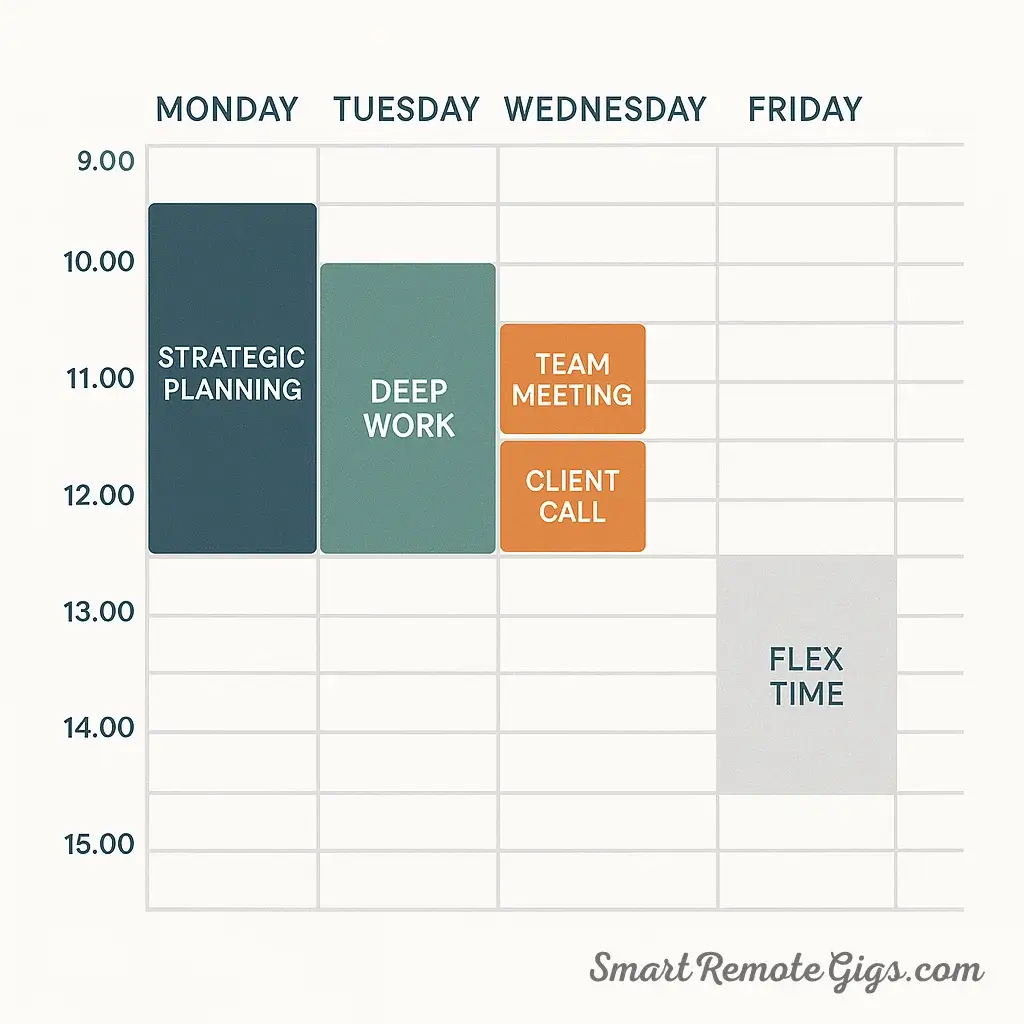
Now we enter the tactical phase: time blocking. Research from MIT shows that task-switching can reduce productivity by up to 40%. Time blocking minimizes these transitions while maximizing flow states.
While time blocking is a powerful start, you can elevate your scheduling by creating a hybrid system with its sibling technique, task batching. Our complete guide explains how Time Blocking vs. Task Batching: Hybrid for Freelancers can create an even more efficient weekly blueprint.
The Theme Days Strategy:
Monday: Strategic Focus Day
- Purpose: Set the week’s momentum with high-impact strategic work
- Ideal for: Planning, big-picture thinking, complex problem-solving
- Sample blocks: 9-11 AM: Weekly strategy session, 2-4 PM: Deep work on primary project
Tuesday: Deep Work Day
- Purpose: Tackle your most challenging, concentration-requiring tasks
- Ideal for: Writing, analysis, creative work
- Sample blocks: 8-12 PM: Uninterrupted focus work, 1-3 PM: Research and development
Wednesday: Connection Day
- Purpose: Meetings, collaboration, networking
- Ideal for: Team meetings, client calls, external networking
- Sample blocks: 10-12 PM: Team meetings, 2-5 PM: Client check-ins
Thursday: Processing Day
- Purpose: Handle administrative tasks and maintenance work
- Ideal for: Email processing, administrative tasks, planning
- Sample blocks: 9-11 AM: Email and communication, 3-5 PM: Planning and admin
Friday: Integration Day
- Purpose: Wrap up the week and prepare for next week
- Ideal for: Project completion, weekly review
- Sample blocks: 9-11 AM: Week wrap-up, 2-4 PM: Next week preparation
Advanced Time-Blocking Strategies:
The 90-Minute Rule: Structure your time blocks around natural 90-minute cycles: 90 minutes of focused work, followed by a 20-minute break.
Buffer Time Architecture:
- Transition buffers: 15 minutes between different types of work
- Travel buffers: Add 25% more time than GPS suggests
- Preparation buffers: 30 minutes before important meetings
Sample Color-Coding System:
- Deep Blue: Strategic/planning work
- Green: Creative/development work
- Orange: Meetings/collaboration
- Yellow: Administrative/processing
- Purple: Personal/wellness
Cal Newport, author of “Deep Work,” emphasizes that scheduling every minute of your day isn’t about rigidity—it’s about intentionality. Your weekly schedule template should reflect your priorities, not just your obligations.
Step 4: Engineer Your Buffer – The 20% Flex Rule
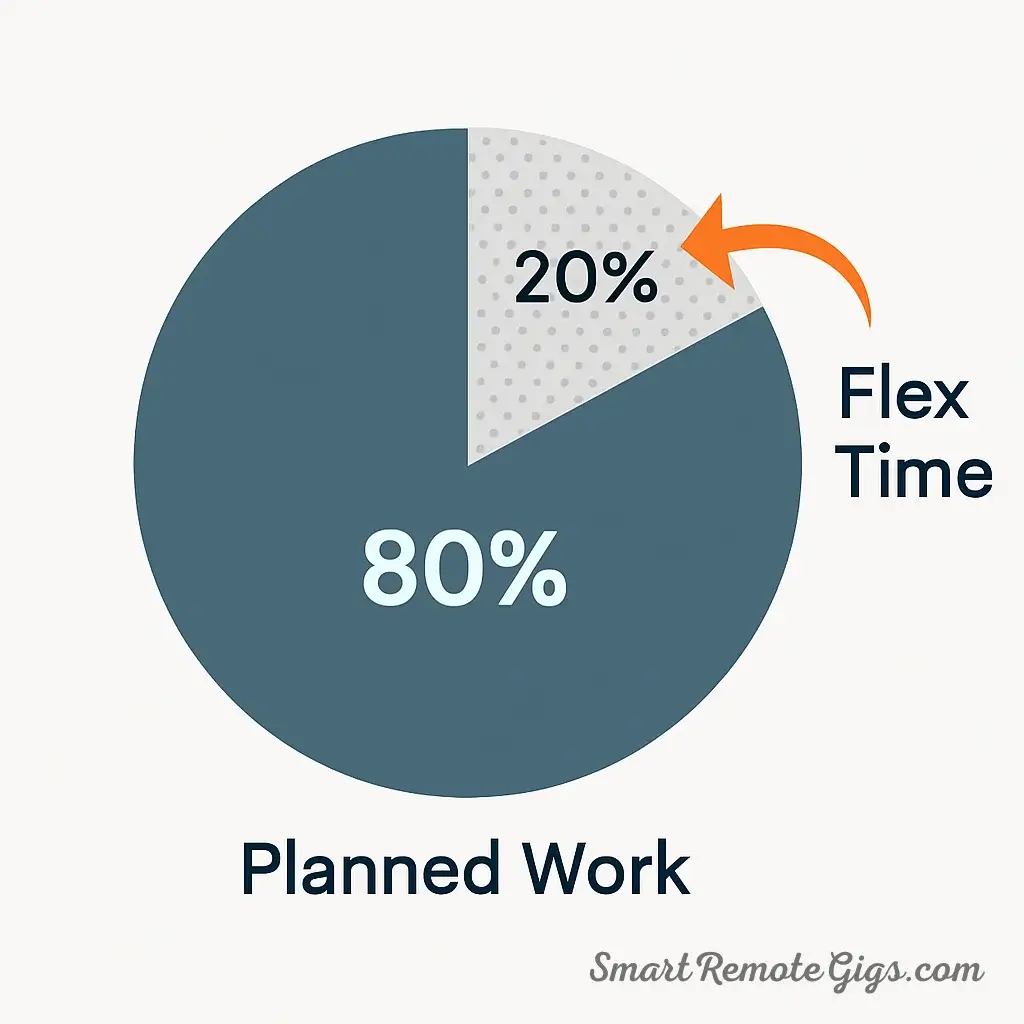
Here’s what separates amateur planners from professionals: building antifragility into your weekly system. The Project Management Institute shows that unplanned work accounts for 41% of knowledge workers’ time. The 20% Flex Rule acknowledges this reality while maintaining focus.
The Three Types of Buffers:
1. Interrupt Buffers (Daily) Reserve 1-2 hours each day for the unexpected. When colleagues need urgent help or clients call with changes, these buffers absorb the impact without destroying your planned work.
Implementation:
- Block 30 minutes in the morning for “urgent morning items”
- Reserve 60-90 minutes in the afternoon for “daily flex time”
- Never schedule back-to-back meetings without 15-minute buffers
2. Opportunity Buffers (Weekly) The most successful people are ready when opportunities arise. That last-minute networking event or unexpected invitation to contribute to a high-visibility project requires time availability.
Implementation:
- Keep Friday afternoon partially unscheduled for “weekly opportunities”
- Maintain one evening per week free for “valuable last-minute activities”
- Reserve one lunch slot weekly for “spontaneous networking”
3. Recovery Buffers (Weekly) High performance requires recovery. Harvard Business Review research shows that people who take regular breaks are more creative and make better decisions.
Implementation:
- Schedule 2-3 hours weekly for “processing and reflection”
- Block 30 minutes daily for “transition and reset time”
- Reserve Sunday evening for “week preparation and mental reset”
Protecting Your Buffers: The biggest mistake is letting buffers get filled with low-priority commitments. Protect your flex time like your most important meeting—because it is.
Step 5: The 5-Minute Daily Huddle to Stay on Course

Your weekly planning system is only as effective as your daily execution. Harvard Business School research shows that people who engage in brief, regular self-reflection are 23% more likely to achieve their goals.
The 3 Daily Questions Framework:
Question 1: “What’s my one priority today that connects to my Weekly Wins?” This forces you to identify the single most important thing you can do today to advance your weekly outcomes. It’s not about your longest task—it’s about your highest-impact activity.
Question 2: “What might derail me today, and how will I handle it?” This proactive question activates “implementation intentions”—pre-planned responses to potential obstacles. Research shows people who anticipate obstacles are 2-3 times more likely to achieve their goals.
Create “if-then” plans:
- “If my morning meeting runs long, then I’ll reschedule my deep work block”
- “If I get an urgent request, then I’ll evaluate it against my daily priority”
- “If I’m feeling low energy, then I’ll take a 10-minute walk before starting”
Question 3: “How am I feeling, and what does my energy level tell me about my approach?” This self-awareness question helps you adapt your daily plan to your current state.
Energy level adaptations:
- High energy: Tackle challenging work, take on stretch goals
- Medium energy: Focus on steady progress, handle routine tasks
- Low energy: Complete administrative tasks, practice self-care
The 5-Minute Implementation:
- Minutes 1-2: Review Weekly Wins and identify today’s priority
- Minutes 3-4: Anticipate obstacles and create “if-then” responses
- Minute 5: Assess energy and adapt your approach
This transforms weekly planning from a rigid system into a flexible, responsive approach that maintains direction while adapting to reality.
Once you’ve used your huddle to identify the day’s priority, the next challenge is execution. To protect the deep work blocks you’ve so carefully scheduled and ensure you remain focused, a proven focus framework is invaluable. Learn how to master your concentration with The Pomodoro Technique Guide: Master Your Focus in 5 Steps.
Your Pro Planning Toolkit: Essential Apps & Templates
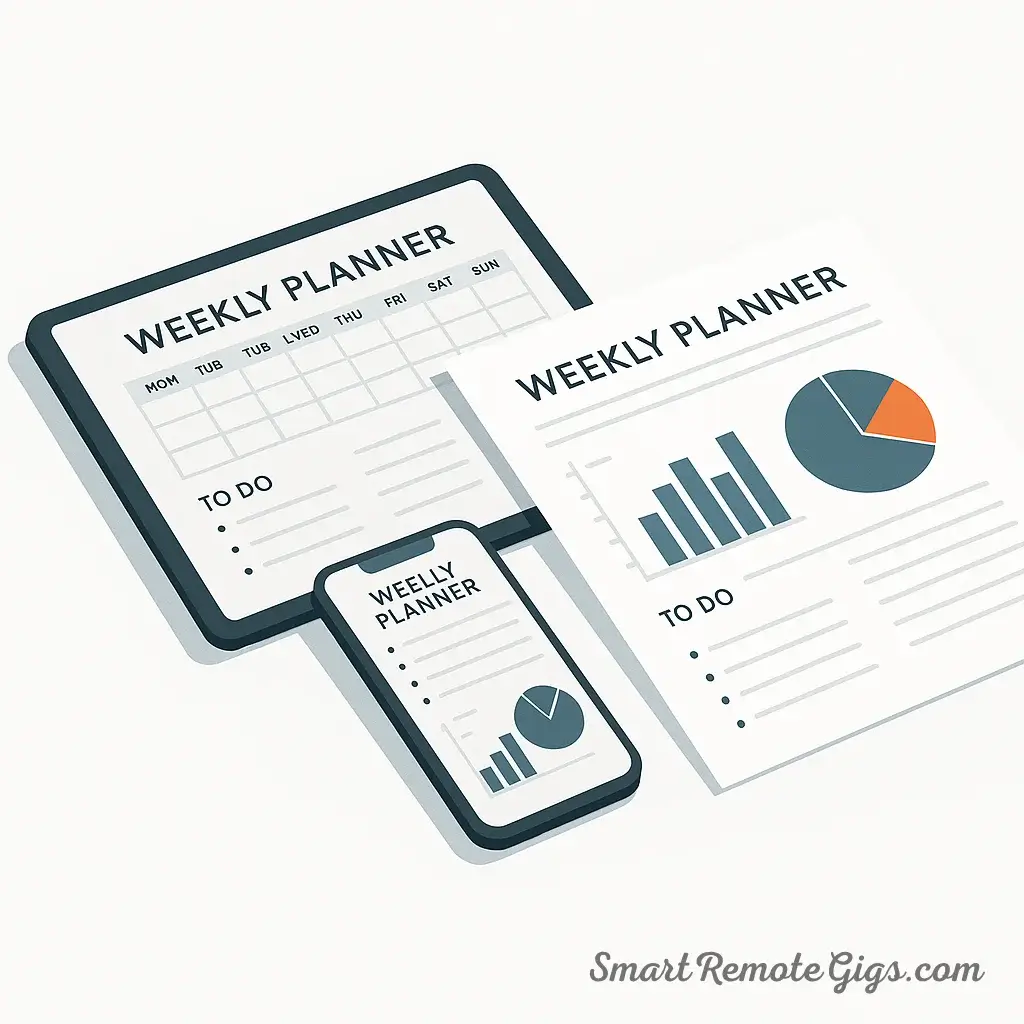
Different people thrive with different tools. Here’s how to choose the right weekly planner template for your style:
Different people thrive with different tools. Choosing the right digital home for your system is crucial for consistency and ease of use. For a full comparison of platforms that can power your weekly planning, check out our comprehensive guide to the Best Note-Taking Apps of 2025: Tested & Reviewed for You.
For Digital Natives: Tools like Notion and ClickUp offer powerful customization for complex workflows and integrated project management.
For Simplicity Seekers: Google Calendar combined with a simple notes app provides everything you need without overwhelming features.
For Paper Lovers: A physical free weekly planner template often provides the tactile satisfaction that helps with memory and commitment.
The Pro Planner Toolkit Includes:
- Printable PDF weekly planner with all 5 steps integrated
- Google Sheets template with automated time calculations
- Notion template with databases for tracking wins and patterns
- Quick-reference guides for theme days and buffer planning
FAQ: Troubleshooting Your Weekly Plan
How to plan your week when urgent tasks from your boss derail your plan?
This is exactly why the 20% Flex Rule exists. When urgent requests arise, you have built-in buffer time to accommodate them without abandoning your Weekly Wins. The key is to communicate proactively: “I can handle this urgent request, and here’s how it will affect my other deliverables this week.”
What is the best way to stay motivated to follow your weekly plan?
Motivation follows action, not the other way around. Focus on your 5-minute daily huddle—it’s small enough that motivation isn’t required, but it creates momentum for everything else. Also, celebrate your Weekly Wins each Sunday to reinforce the behavior.
How to plan your week: digital or paper planner?
The best planner is the one you’ll actually use consistently. Paper planners work well for people who think better by writing and prefer minimal distractions. Digital planners excel for people with complex schedules who need integration with other tools. Many pros use a hybrid approach.
How to plan a productive week if you don’t accomplish all three Weekly Wins?
Perfect execution isn’t the goal—consistent progress is. If you accomplish 2 out of 3 wins most weeks, you’re making tremendous progress. Use your Sunday Reset to understand what prevented the third win and adjust your approach, not your standards.
What are the best weekly planning tips for beginners?
Start with just the Sunday Reset and one Weekly Win. Master these basics before adding complexity. Use our beginner’s guide to weekly planning for step-by-step implementation.
How to organize your week when you have an unpredictable schedule?
Focus even more heavily on the 20% Flex Rule—consider using 30% buffers if your schedule is highly variable. The theme days concept becomes especially valuable because it helps you batch similar work when opportunities arise.
From Chaos to Control: Your Transformation Starts Now
You now have the complete system to plan your week like a pro. This isn’t just another productivity hack—it’s a fundamental shift from reactive to proactive, from busy to purposeful, from overwhelmed to in control.
This shift is about more than just personal productivity—it’s about professional strategy. When you consistently achieve your Weekly Wins, you are not just completing tasks; you are building a track record of reliability and excellence. This is the very foundation of a powerful reputation. To take this to the next level, you can learn how to leverage this consistency in The Remote Personal Branding Playbook: A Complete Guide.
Research confirms that people who engage in weekly planning are more productive, less stressed, and more satisfied with their work-life integration. But knowledge without action is just entertainment.
Your First Step: Right now, open your calendar and block 30 minutes for this Sunday’s planning session. Title it “Weekly Reset” and set a reminder. This single action moves you from reading about change to creating it.
Next, download your free Pro Planner Toolkit and choose the template that fits your style. Whether you prefer digital organization or the tactile experience of paper planning, having the right tools makes implementation effortless.
Remember: the goal isn’t to become a planning perfectionist. It’s to create a weekly planning system that serves you, reduces stress, and helps you focus on what truly matters. Your future self—the one who accomplishes meaningful goals while maintaining balance—is just one Sunday Reset away.
The choice is yours: continue the cycle of reactive busyness, or step into the clarity and control that comes from knowing how to plan your week with intention and expertise.
Your transformation starts with your next Sunday. Make it count.
